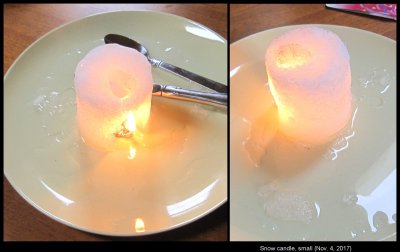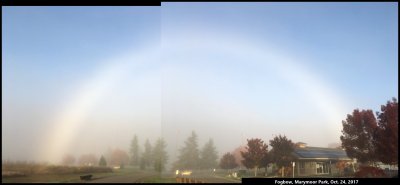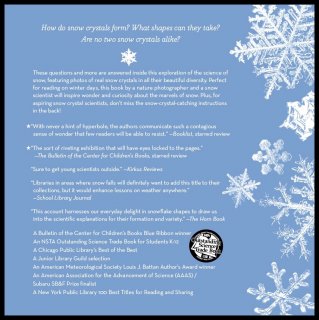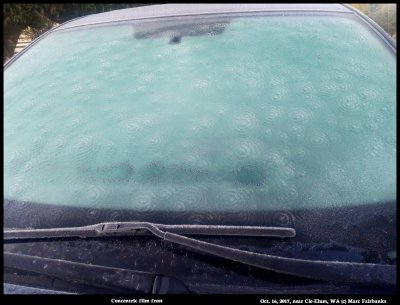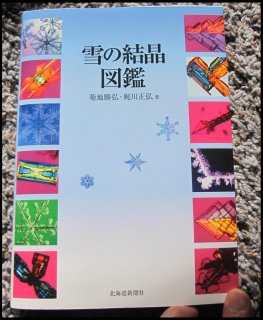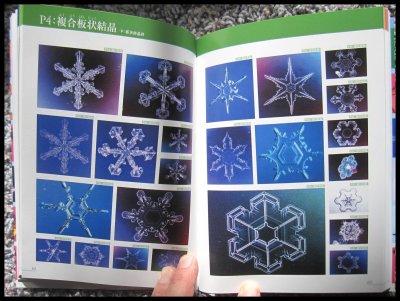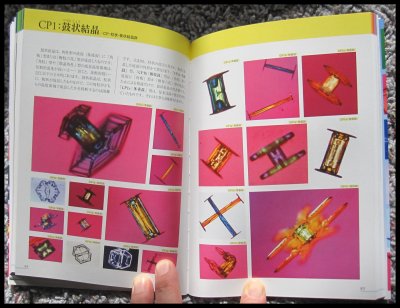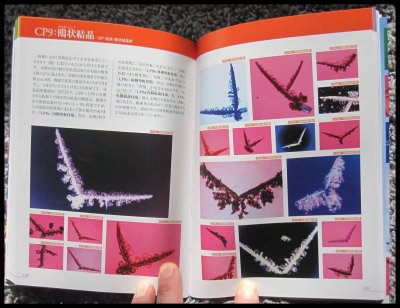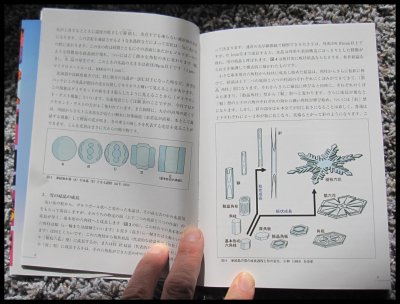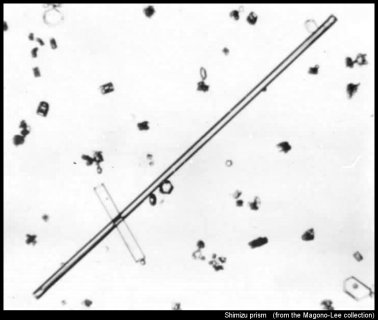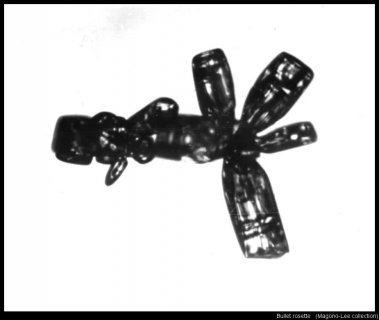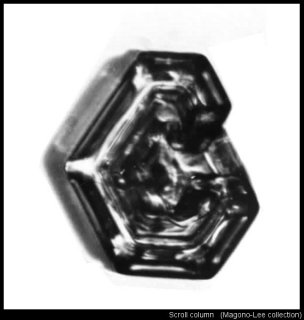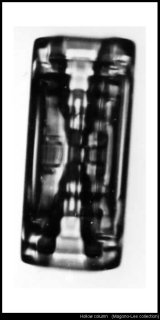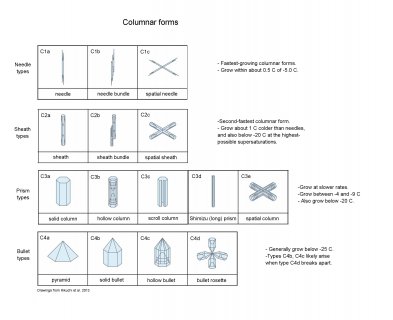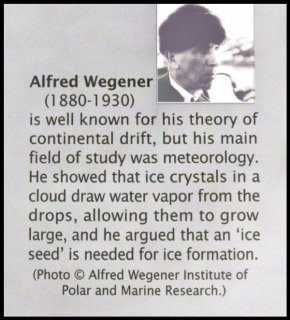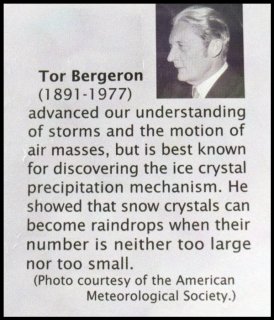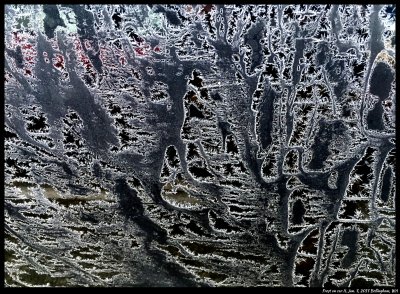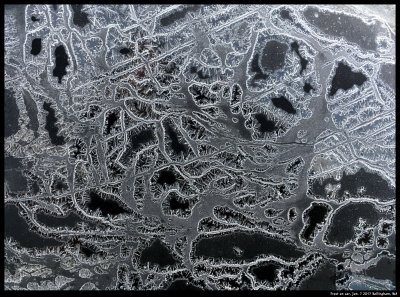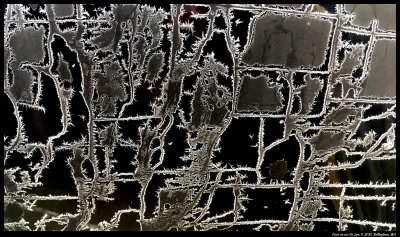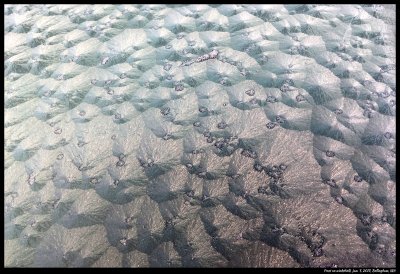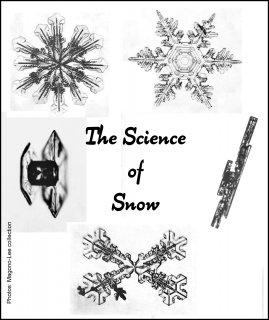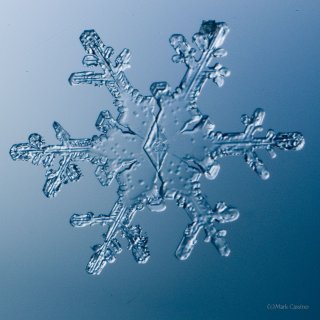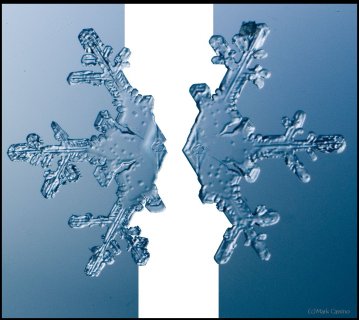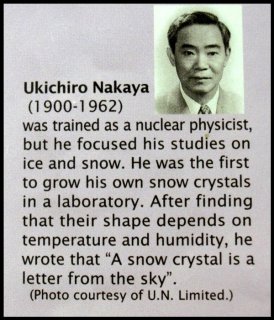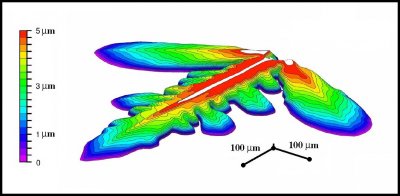The "Snow Candle"
November 6th, 2017If you go about 50-km northwest of Sapporo, Japan, aiming to stay on the coast, you will land in the port city of Otaru. Like Sapporo and the rest of Hokkaido, this is snow and ice country. Here in Otaru, they have a "snow candle" festival every winter. The snow candles are just partly scooped out, upside down, packed lumps of snow with a lit candle inside. (Perhaps a better name would be "snow lantern".) They make them in quantity by packing a standard-sized plastic bucket with snow, scooping out part of the center and side, then turning them upside down and removing the bucket moulding. Then they put a standard, short candle inside and light it. When they are all lit, they appear like small glowing igloos along various walkways and attract large crowds at night.
Yasuko made a mini version recently, and brought it indoors. Instead of using a bucket and standard-sized candle, she used a coffee mug and snipped birthday-cake candle.
It lasted only about 15 minutes. But if you make it like they do in Otaru and keep it outside, it may last much of the evening or night.
- JN
A Fogbow
October 25th, 2017A fogbow, or cloudbow (fog is a type of cloud), is a special type of rainbow. It is just white, and so not as often photographed as the full-spectrum rainbow, but it can be exciting to see nevertheless.
The reason the fogbow is white is because the water droplets in fog are much smaller than raindrops. Fog droplets may vary in diameter roughly between 1 and 20 millionths of a meter (i.e., 1-20 microns), whereas raindrops are typically 1-3 thousandths of a meter, or about 500 times larger. The wavelength of visible light is only about a half a micron, so the light rays inside a fog droplet are still fairly well defined, but there is simply not enough room to separate out the colors, to state things simply.
Upon approaching a fog in the morning, look towards, but above your shadow. About 50-60 degrees from the shadow of your head is where the fogbow will sit, just as it would for a rainbow. Evenings will work too. But midday, the angles 50-60 degrees above your shadow will have you looking at the ground, so you probably won't see a fogbow there. (If you are in an outdoor shower, you might see a rainbow though.)
The above photograph shows the fogbow I saw yesterday morning, about 8:30 am, biking into a nearby park.
-- JN
New paperback edition out, Sept. 2017
October 25th, 2017After eight years, several translated editions, a teacher's guide, and a Scholastic edition, The Story of Snow had a paperback edition, also from Chronicle books. The size is the same, and the content is the same except for one thing. This version lists some of the glowing reviews and accolades on the inside cover (click on image to read):
- JN
Concentric Film Frost
October 25th, 2017October 16, 2017, the first frost of the 2017-18 winter as far as I know. Frost in Eastern Washington anyway, those of us on the west side of the Cascade Mts have not gotten any yet. Marc Fairbanks, an avid nature observer from the mountains near Cle Elum, sent me the following shot (click on the image to fully appreciate the pattern).
This is primarily film-frost, that is, is based on ice that formed when liquid film froze. But as I discussed in a previous post, some important growth processes here also occur through the vapor phase:
http://www.storyofsnow.com/blog1.php/crystal-to-crystal-communication-through-vapor-and-heat
I had even earlier noted some "ripple" patterns on a windshield and mused about their formation:
http://www.storyofsnow.com/blog1.php/ripples
As I'll discuss next, there are some other illuminating observations here.
A complete picture book of all (known) snow types
February 24th, 2017Prof. Katsuhiro Kikuchi, a highly regarded ice and snow researcher from Hokkaido, Japan, kindly mailed me a copy of his wonderful new book (coauthored with Dr. Masahiro Kajikawa). Never before has there been anything nearly as complete as this book in describing and showing all known types of falling snow. It is called "Picture Book of Natural Snow Crystals” and published by the Hokkaido Shinbun News Paper Co., Sapporo.
The only issue for most of the readers here is the fact that it is written in Japanese. This issue though does not mean one cannot learn a lot from the pictures. Here are a few sample pages:
First, the broad-branch planar crystals P4d, P4e, and P4f:
Next, some basic combination forms (columnar and planar), specifically CP1a and CP1b:
A few of the above have been named after the Japanese-type drum "tsuzumi" due to their resemblance to this drum. Next, a type named for its resemblance to a flying seagull, the CP9a and CP9b:
Finally, a sample of the many explanatory diagrams:
The above diagrams explain how some crystals transform from a frozen sphere ("droxtal"), which all snow-crystals begin as (excluding broken fragments), to the larger forms we see on the pages. About these crystal images, Prof. Kikuchi collected them from a range of locations he visited including his nearby area of Hokkaido and Honshu, and further north and south, to the Arctic, Greenland, and the South Pole. So, though it may be possible, don't expect to see all these forms in your neighborhood.
Overall, it is an amazing book, and I wish we had something like it in English.
- JN
Columns!
January 18th, 2017The poor columns get left out of nearly all snow-crystal discussions, but they are an interesting type. So, to help them out a bit, here's my first column appreciation post.
Let's start with perhaps the most extreme column of all, the Shimizu prism*:
I say 'extreme' because they are so long and thin--sometimes over 1-mm long yet just 0.01-0.02 mm in diameter. These types have so far been found to fall only on the Antarctic Plateau. But in theory, they should be able to form elsewhere. It is like a "whisker" crystal, which Teisaku Kobayashi grew below -50 C on a surface in the lab. The image above shows many other crystals as well, including another solid column crossing the Shimizu prism.
Next, the bullet rosette:
The bullet rosette is most often found below -25 C in high cirrus clouds. It is an example of a polycrystal; in this case, a frozen droplet that froze into several distinct crystals (one for each "bullet").
Next, one of my favorites, the scroll column (though the picture doesn't quite do it justice):
In this form, the sides of the crystal seem to fold inward, like a scroll.
Finally (for now, anyway), the ubiquitous hollow column:
The funny banding you see (horizontal lines inside the 'hollow') is a mystery.
There are many other columnar forms, many of which are in the following diagram (as with all images here, click on it to see it enlarged)**:
One neat thing about the columnar forms is that you can see roughly exact replicas of them in hoarfrost. The Shimizu prism may be hard to find, but the others are common if you look closely.
-JN
* Images are from the Magono & Lee collection, used in their paper: Meteorological classification of natural snow crystals. J. Fac. Sci., Hokkaido Univ., Ser. VII 4, 321–335.
**Drawings are based on those in Kikuchi, Kameda, Higuchi, and Yamashita: A global classification of snow crystals, ice crystals, and solid precipitation based on observations from middle latitudes to polar regions. Atmos. Res. 132-133 (2013) 460-472.
How clouds form snow
January 14th, 2017To understand snow formation, one must know a little about clouds.
Q: What is in a cloud?
A: Air, dust, vapor, droplets, and often, ice.
Q: How much air? How much liquid water? How much ice?
A: The answers will probably surprise you. See my short 20-min presentation below. I gave this recently to the Bellingham, WA Snow School. (23 slides, but due to file-upload-size restrictions, I had to put them into three parts below, 10 slides, 6 slides, 7 slides.)
Snow, rain, and weather affect everybody, yet how many of us learned in school even the most basic facts about precipitation in school?
Q: Who first realized how ice grew in a cloud?
As described in my presentation, he realized this by observing frost on the ground.
Q: Who first realized how Alfred's theory was intimately connected with rainfall?
Tor discovered this by observing fog in a mountain forest, and like Alfred, applied some of his physics knowledge.
In my presentation, I discussed Alfred Wegener, the roles of the different cloud components, and briefly how the ice, once formed, takes on its strange shapes:
First 10 slides (with blue text added to account for the things I said during the talk):
http://www.storyofsnow.com/media/blogs/a/Jan2017/snowschool_annotated1t10.pdf?mtime=1484585328
Next 6 slides:
http://www.storyofsnow.com/media/blogs/a/Jan2017/snowschool_annotated11t16.pdf?mtime=1484585328
Last 7 slides:
http://www.storyofsnow.com/media/blogs/a/Jan2017/snowschool_annotated17t23.pdf?mtime=1484585309
Later, I will show specifically how the ice gets arranged into all these strange shapes.
- JN
More frost patterns on black cars
January 7th, 2017Black cars remain my favorite place to observe frost patterns. Here are a few I saw on one car today.
The straight lines of frost are more common when it is drier. And it has been quite dry here due to the very low temperatures.
These pictures show an interesting mixture of straight lines and curved boundaries.
And finally, the windshield had a pattern that resembled a hilly landscape.
But the pattern is actually quite flat. The frost is playing mind games on us, presenting an optical illusion of 3D topography.
As with all cases of frost on surfaces, the ice initially got started when a thin layer of liquid (melt) froze in various spots. The ice that grew, first grew in the melt layer, then grew on top, essentially "sucking"** the vapor out of the surrounding air, thus drying out surrounding regions. This is why we see bare surfaces near the larger frost crystals. Those frost crystals grew from the vapor, just like snow, but are anchored to the surface because that's where the film froze. So, two types of crystallization are important: freezing of the melt (melt --> ice) then vapor deposition (vapor --> ice).
- JN
** The actual process is diffusion (the way perfume molecules reach our noses), but this term is a little more vivid.
Snow Science: an annotated list to topics
December 17th, 2016For those interested in the science of snow, I give an annotated list of relevant blog links.
I) Seminar about snow science (sequence of four videos):
http://www.storyofsnow.com/blog1.php/trip-of-the-ice-man
II) All the different types of falling ice in one diagram:
An older, simpler diagram:
http://www.storyofsnow.com/blog1.php/how-to-classify-snow-crystals
III) Why snow has six sides (the real answer, not the sloppy, standard answer):
http://www.storyofsnow.com/blog1.php/how-the-crystal-got-its-six
IV) How snow forms and how it is analogous to people:
http://www.storyofsnow.com/blog1.php/i-am-a-giant-snow-crystal-imperfect-thing-of-habit-bouncing-along-life-s-gusts
V) How to determine what the cloud conditions were like by looking at a snow crystal:
http://www.storyofsnow.com/blog1.php/new-habit-diagram-for-branched-tabular-crystals
VI) How snow crystal shapes are like frost crystal shapes (many blog entries about this, but here are just two):
http://www.storyofsnow.com/blog1.php/a-change-in-habit
http://www.storyofsnow.com/blog1.php/the-cup-and-the-butterfly
VII) Why is snow sometimes white and sometimes black? Also, why is snowpack so bright?
http://www.storyofsnow.com/blog1.php/white-snow-black-snow-pink-snow-blue-snow
VIII) Some finer details of those star-shaped crystals and what they tell us:
Two-level;
http://www.storyofsnow.com/blog1.php/two-level-nature-of-branched
Droplet origin:
http://www.storyofsnow.com/blog1.php/how-some-snow-crystals-hide
http://www.storyofsnow.com/blog1.php/how-some-snow-crystal-centers
A signature of sublimation:
http://www.storyofsnow.com/blog1.php/how
http://www.storyofsnow.com/blog1.php/akira-s-corner-pockets
IX) If you look up at a cloud, how do you know it has ice crystals in it?
http://www.storyofsnow.com/blog1.php/it-s-not-a-rainbow-it-s-better
http://www.storyofsnow.com/blog1.php/halo-in-the-sky-uh-i-don-t-see-no-halo
Over the coming year, I'll be adding to this and reposting it.
-- JN
Two-level nature of branched crystals
December 11th, 2016The common branched crystal looks like a paper cut-out, but actually has a complex 3-D nature. One aspect of this nature, which I have alluded to in prior posts, is the two-level structure: What appears to be happening on one plane, is actually occurring on two. For example, consider the following dendrite of Mark's:
The six branches of this crystal are not on the same level: the three on the right are on the top level, whereas the three on the left are on the bottom. If I could break the connection between the levels and pull them apart, they would look similar to this:
Actually, the connection can be broken. The fellow who first did this was Ukichiro Nakaya back in the 1930s.
Instead of using photoshop (as I did above), Nakaya (or rather Nakaya's assistant) used a razor blade in a very cold room. His assistant must have been both highly skilled as well as very patient, because each level is separated by less than half the width of a typical human scalp hair.
The levels themselves are even thinner. For a fern-like dendrite, which may be 2 mm across, the thickness of one level may be 300 to 500 times thinner. A recent study ** by Wataru Shimada and Kazuki Ohtake of Toyama Univ. in Japan used a laser-imaging device to map out the contours on such a branch. The result shows an intricate 3-D structure:
(Thanks to Prof. Shimada for sending me this image. I have slightly simplified it.) The image shows the central part of the branch as a ridge, with numerous valleys running down both sides. The thickness of the region in red is only 5 micro-meters (5 millionth of a meter or about 0.2 thousandths of an inch).
None of this is the flat facet that we imagine a snow crystal to be. There is one flat facet however -- it is on the bottom side.
-- JN
**The study is here, though not freely accessible: http://pubs.acs.org/doi/abs/10.1021/acs.cgd.6b01263
